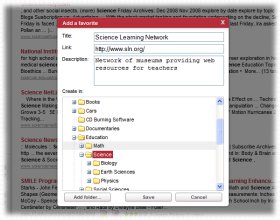|
Education
Web
Viewing 1-2 of 2 total results
–33 Standard #1 • Obtain a topographic relief map and a corresponding paper contour map of a coastal area (preferably in Massachusetts). Use both maps to demonstrate the changes in the coastline that would occur if the sea level were to rise by various amounts. •...
1
0
–33 Standard #1 • Obtain a topographic relief map and a corresponding paper contour map of a coastal area (preferably in Massachusetts). Use both maps to demonstrate the changes in the coastline that would occur if the sea level were to rise by various amounts. • Use topographic maps to explain an environmental problem, its location, its cause, and a proposed solution. • Construct a clinometer. If suitable terrain is available, use a clinometer to determine the height of geologic features, the slope
40
0
http://www.doe.mass.edu/frameworks/scitech/1006.pdf#page=40
www.doe.mass.edu/frameworks/scitech/1006.pdf#page=40
Earth and Space Science, Grades 6–8 LEARNING STANDARD IDEAS <span class="highlight">FOR</span> DEVELOPING INVESTIGATIONS AND LEARNING EXPERIENCES Mapping the Earth 1. Recognize, interpret, and be able to create models of the earth’s common physical features in various mapping representations, including <span class="highlight">contour</span> <span class="highlight">maps</span>. Choose a small area of unpaved, sloping ground in the schoolyard or a park. Create a scale <span class="highlight">contour</span> map of the area. Include true north and magnetic north. Earth’s Structure 2. Describe the layers of the
125
0
http://www.doe.mass.edu/frameworks/scitech/1006.pdf#page=125
www.doe.mass.edu/frameworks/scitech/1006.pdf#page=125
–33 Standard #1 • Obtain a <span class="highlight">topographic</span> relief map and a corresponding paper <span class="highlight">contour</span> map of a coastal area (preferably in Massachusetts). Use both <span class="highlight">maps</span> to demonstrate the changes in the coastline that would occur if the sea level were to rise by various amounts. • Use <span class="highlight">topographic</span> <span class="highlight">maps</span> to explain an environmental problem, its location, its cause, and a proposed solution. • Construct a clinometer. If suitable terrain is available, use a clinometer to determine the height of geologic features, the slope
Technology/Engineering Curriculum Framework.) Grade 6 Concepts and Skills Students should be able to: Apply concepts and skills learned in previous grades. H GEOGRAPHY kinds of projections, as well as topographic, landform, political, population, and climate maps. (G) peninsula, erosio...
1
0
Technology/Engineering Curriculum Framework.) Grade 6 Concepts and Skills Students should be able to: Apply concepts and skills learned in previous grades. H GEOGRAPHY kinds of projections, as well as topographic, landform, political, population, and climate maps. (G) peninsula, erosion, climate, drought, monsoon, hurricane, ocean and wind currents, tropics, rain forest, tundra, and urbanization. (G) that conveys geographic information (e.g., about rainfall, temperature, or population size data). (G
39
0
http://www.doe.mass.edu/frameworks/hss/final.pdf#page=39
www.doe.mass.edu/frameworks/hss/final.pdf#page=39
Technology/Engineering Curriculum Framework.) Grade 6 Concepts and Skills Students should be able to: Apply concepts and skills learned in previous grades. H GEOGRAPHY kinds of projections, as well as <span class="highlight">topographic</span>, landform, political, population, and climate <span class="highlight">maps</span>. (G) peninsula, erosion, climate, drought, monsoon, hurricane, ocean and wind currents, tropics, rain forest, tundra, and urbanization. (G) that conveys geographic information (e.g., about rainfall, temperature, or population size data). (G
130
0
http://www.doe.mass.edu/frameworks/hss/final.pdf#page=130
www.doe.mass.edu/frameworks/hss/final.pdf#page=130
Grades 1 and 2 (continued) ❚ Tell time at quarter-hour intervals on analog and <span class="highlight">digital</span> clocks using a.m. and p.m. DATA ANALYSIS, STATISTICS, AND PROBABILITY ❚ Use interviews, surveys, and observations to gather data about themselves and their surroundings. ❚ Organize, classify, represent, and interpret data using tallies, charts, tables, bar graphs, pictographs, and Venn diagrams, and interpret the representations. ❚ Formulate inferences (draw conclusions) and make educated guesses (conjectures
|
